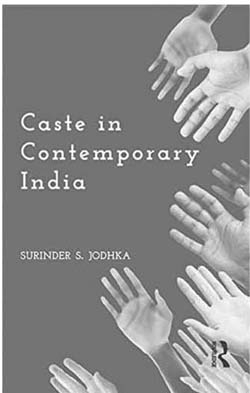As a sociologist of education, I have dwelt on the inequalities present in not only our education system but also in the many processes, activities and inter-subjective interactions that characterize life in educational institutions. These have brought home to me the heightened significance of certain categories in understanding inequity in education, including caste, gender, religion, linguistic abilities, and disabilities of different kinds. There is no doubt that caste as a deeply experiential identity, and as a source of ‘qualitative inequality’, as Jodhka puts it, remains critical to the everyday experience of childhood, schooling and higher education, in India.
The significance of Jodhka’s very readable collection of essays is his twin focus on the structures of society that seek to oppress others whether these emanate from caste based linkages, economic and social class differences, and even reconstituted or reconstructed caste identities, as well as on the lived experience of both those who seek to oppress as well as those who are weighed down by not just the external characteristics of their oppression but more significantly, their experience of this oppression in everyday life.
Jodhka does not spend too much space on discussing caste as an organizational principle, or hierarchy and its ramifications, and other classical approaches to caste. As a result, his work is immediately accessible and relevant. Jodhka’s effort is to understand caste as it is experienced today, its changing contours and colours, chameleon-like, appearing to benefit some who seek out education and employment, for example, but destroying lives when caste becomes endemic to issues associated with identity such as honour, convention and custom, the dignity of some over others. The second significant aspect of this book is its focus on rural Punjab, as well as on the urban sector in Punjab, Haryana, and U.P., through thick description and a nuanced concentration on the everyday. Finally, what marks this work and is significant from other commentaries on caste is Jodhka’s effort to dwell not only on rural, or lives in small-town India in all their complexity, but also examine aspects of the workings of caste among the ‘elite’, even in its apparent ‘absences’ so to speak, for example, in his analysis of hiring practices among the corporate elite.
My reading of Jodhka’s book also underscores the significance of affect that underpins his analysis and to which he fleetingly refers in his introduction when he points to the institutionalization of ‘humiliation’ as a social and cultural practice. This is an experience of caste that brings out far more starkly than any data base can, the psychological trauma and complexities of caste. It is well known that Dalit writers bring thick description, affect and rich experiential accounts into their understanding of the everyday. Such an experience has been documented by Dalit writers in auto-ethnographies such as Joothan (Valmiki 1997, 2003). Pandian tells us how such writings bring a kind of ‘radical empiricism’ that ‘transcends the divide between theory and fact and opens up spaces for alternative politics for subaltern groups’ (2008: 34).

